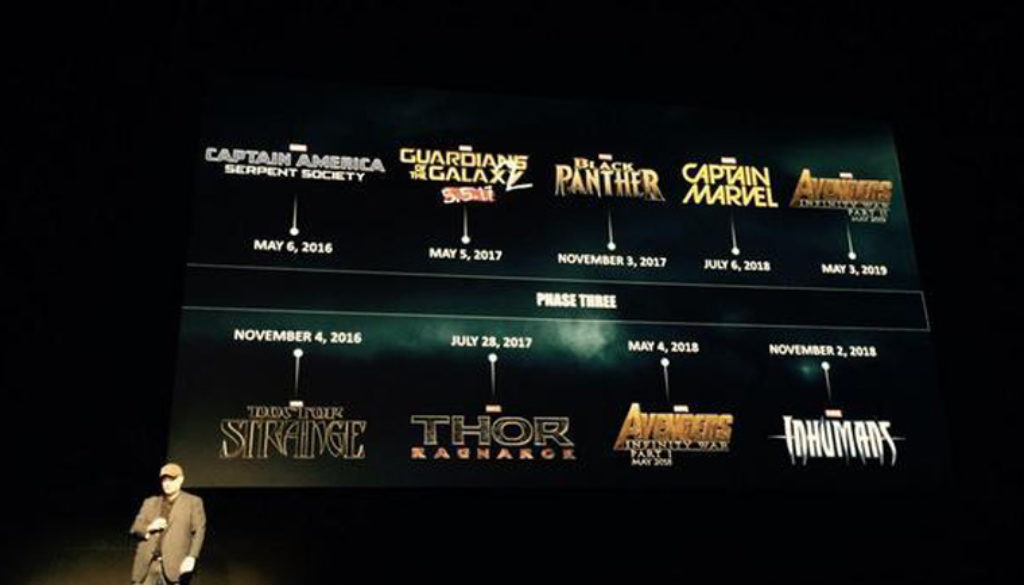These days in Hollywood, sequels are greenlit as early as the day before the first film is even released. The box office buzz alone is enough to convince a studio that a sequel is warranted financially. And usually said sequel is released an average of two to four years afterwards. Enough time to ride the success of the first as well as to make the new film itself, but also not so long that general audiences lose interest. But how long is too long to wait?

When Is a Sequel Necessary?
Sequels are inherently tricky when it comes to justifying their own existence. The entire point of a film to is to have a fitting ending to a complete storyline. Therefore the only real reason to do a sequel is to continue a storyline worth pursuing. There are even examples of sequels which surpassed their predecessors in terms of quality and popularity. Films such as: Aliens, The Dark Knight, The Godfather Part II, and Terminator 2: Judgement Day. Each of these took the plot and characters from the original and expanded them to new and fascinating places.
Most unfortunately however, for every one good example, there is a myriad of terrible ones. The most common flaw is a sequel essentially recycling the plot from the original, only doing it “bigger and better”. Not only are they pointless, but they seem almost insulting to audiences suggesting that they can be fooled by the same product twice. And yet year after year, studios persist in this con, tricking audiences out of their money. Box office performance rather than justice to the story drives the motivation for sequels.

Time is of the Essence
As previously mentioned, most sequels are released within two to four years from the original. This is done so that the buzz and excitement is still alive to attract audiences. When studios fail to do this, it can often backfire. In 2005, Sin City was released to critical and commercial acclaim. Many considered it to be a new film noir classic. And while there was great demand for the rest of Frank Miller’s graphic novel series to be adapted, Dimension and Troublemaker Studios waited too long to act. Its sequel, Sin City: A Dame to Kill For was released 9 years later in 2014 to a very underwhelming reception. It failed to gross even 2/3 its production budget, not including marketing. The time to release it should have been 2007 or 2009 at the latest. But after such a gap in time, audiences had simply lost interest in the potential franchise that would now never be. However the opposite may be true as well. The lackluster box office performance of Solo is partly being blamed on it only being released five months after The Last Jedi. Fans need time to breathe in between films in a series, but not so much time they forget they want to see more.

The Art of the “Sequel Reboot”
Perhaps the only way for audiences to fully accept and embrace a sequel after many years is if it’s done in the manner of a “sequel reboot”. This is when the sequel still contains characters and references to the original but can be enjoyed by fans without having seen it. Some consider it a more neutral manner to approaching reboots, since it still maintains the integrity of the earlier films. The Ghostbusters reboot of 2016 suffered a great deal of backlash, while this year’s Ocean’s 8 did not. Both films involved a gender-swapped cast, but what the former did that the latter did not was override the original film entirely. Ocean’s 8 still technically linked back to the original film trilogy, not replacing it at all. Due to such stigma against traditional remakes, the “sequel reboot” has been a popular tool of Hollywood recently. Some are met by great success like Jurassic World and Mad Max: Fury Road, while others are not so warmly received like Terminator: Genesys and Indiana Jones and the Kingdom of the Crystal Skull. They are subject to the same variations in quality as traditional sequels, but amount of years passed is less of a factor in their potential for success.

Is it possible to do a remake or sequel reboot while still maintaining the integrity of the original? It’s difficult to know. In an era of filmmaking where nostalgia seem to reign supreme, perhaps audiences are to blame for the oversaturation of sequels and reboots. But these very same fans could simply re-watch the original classics they love rather than risk ruining their legacy by demanding another chapter. While some of these new films will be well received, can anyone justify the fact that they exist at all?





